General accounting
VII. 29. A complete exercise
Video part 2
Video part 1
In this lesson, to strengthen our understanding of the Income Statement and the Balance Sheet, we shall treat the first 10 transactions of a firm. And, without going through all the formal technique of posting -> Trial balance -> adjustments, etc., we shall study directly the ongoing impact on the IS and BS.
The complete process is a mechanical sequence of procedures which guarantees, like a safety net, that we arrive at the correct meaningful IS and BS.
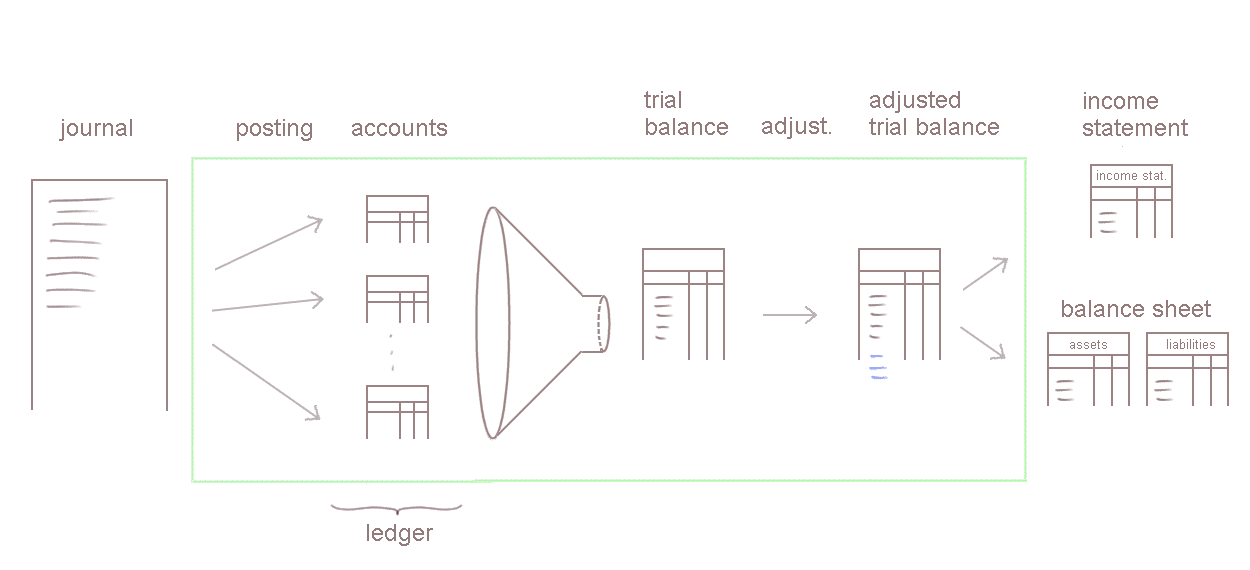
The intermediate steps (in the green frame), which we studied in the past lessons, may appear somewhat complex. But this by no means implies that the end results are complex too.
In this lesson, we shall see that the IS and BS are a very natural representation of the operations of the firm during the cycle and of their end result.
We use the following journal

Remember that an IS is prepared over a period of time, from t1 up to t2. Think of it as a movie.
Whereas a BS corresponds to a date t. Think of it as a snapshot.
We shall follow the IS always from the beginning of the firm until right after each transaction. And we shall look at the BS after each transaction.
1. Founding capital: the owners put 100 000€ of cash into the firm, and they receive 100 shares, each with face value of 1000€.
In this course, we do not make use of the face value of each share, but we may take this opportunity to mention that the shares, during the life of the firm, will have a market value which usually will be different from their face value (also called "book value"). The market value of common shares of big firms listed in stockmarkets can be read every morning in newspapers in the financial section.
Let's just stress that the capital account records the value of the shares at their nominal (= initial = face = book) value. In other words, the capital is recorded at its initial value too, without consideration for the evolution of the price of shares on stockmarkets.
After this first transaction there is no meaningful IS (from beginning to now) yet.
The balance sheet is simple:
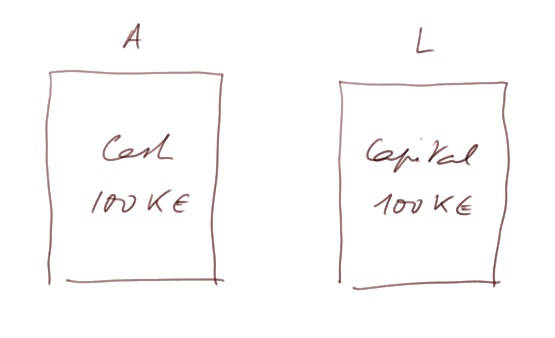
2. Purchase of 500 items, at 60€ apiece, on credit from a supplier named Mary
No change to the IS (no significant IS yet, although we could already prepare a "trading account" with no sales, no opening stock, and closing stock compensating exactly the purchases).
The evolution of the BS is simple:
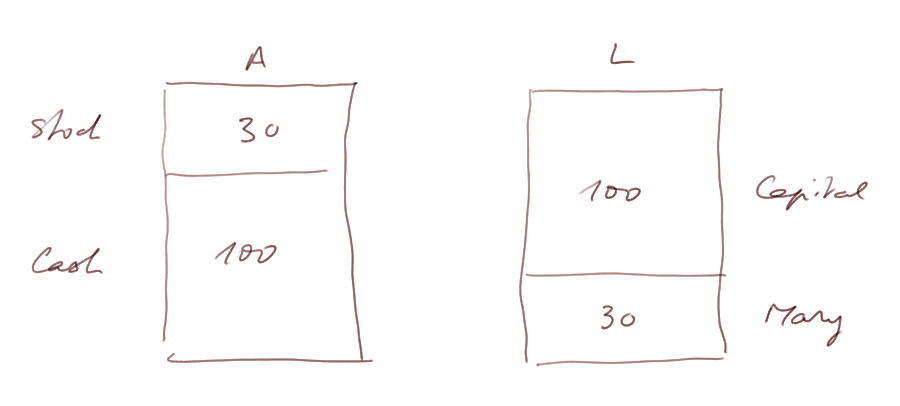
(we dropped the K, meaning "thousand" next to the figures)
3. Sale of half of our stock for cash (250 items at 200€, selling price, each)
Now there is a meaningful IS
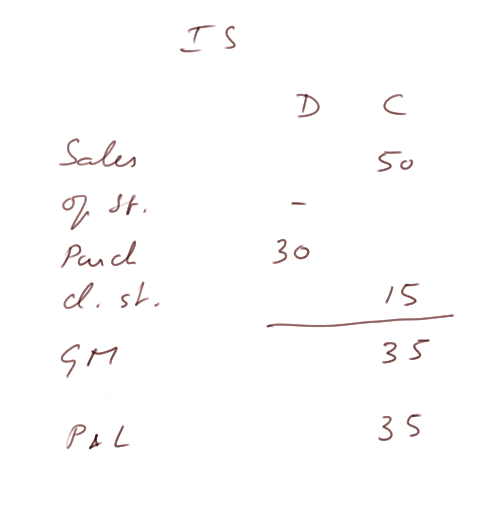
Of course this is not a "final IS" between the beginning of the firm and transaction 3. We haven't recorded any other charge than the COGS, made no adjustment...
But this shows the formation of 35 000€ of profit. It is an important observation: we created value, by selling for 50K€ something which we purchased for 15K€.
This P&L finds its way into the BS:
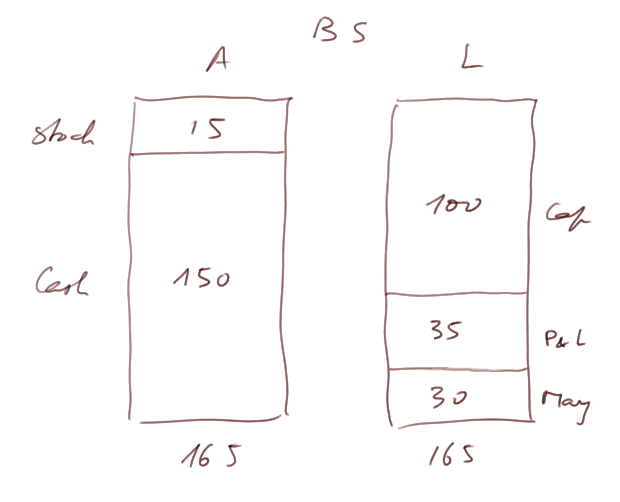
4. Pay Mary
No change to the IS.
In the BS, the cash decreases, and the creditor Mary disappears
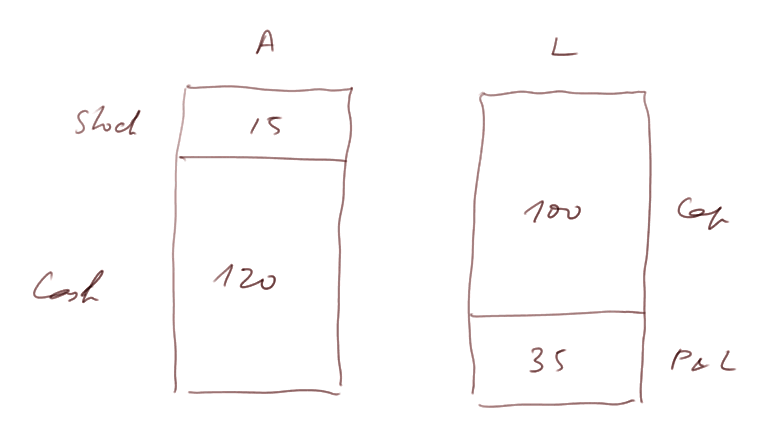
5. Acquisition of equipment (Fixed Assets)
No change to the IS, which remains this:

It is a key point: even though the acquisition of equipment is an important operation of the firm, it doesn't appear in the income statement.
The reason is that the IS represents only a subset of the operations of the firm: the sales of the cycle and the costs to generate them.
Buying a piece of equipment is not an expenditure directly linked to sales generation, and income generation, of the cycle. Or at any rate we cannot charge the entire cost of the equipment to only one cycle.
When we shall look, however, at how to take into account, in the cycles, the expenditure for equipment, we'll end up with a sequence of amortization over several years. And each yearly amortization is an expenditure of its cycle to create the sales of that cycle.
In the BS, there is a redistribution of the assets (no change to the liabilities):
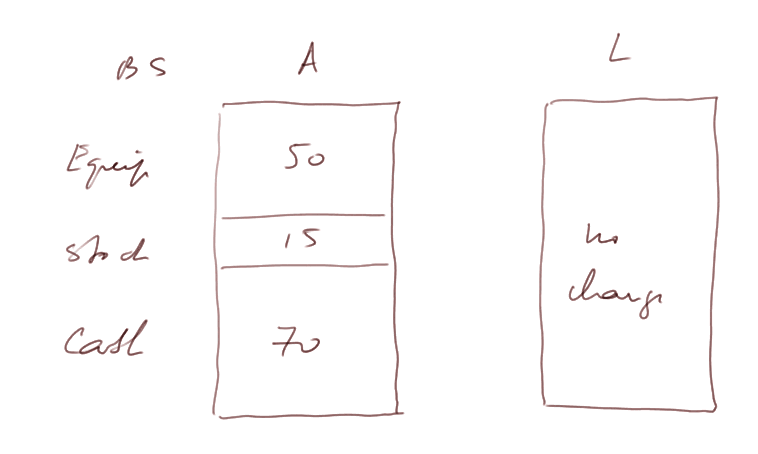
6. Sale of the remainder of the stock for 40K€ to Steve on credit.
We sell the remaining 250 items, this time for 160€ each. It is not the same selling price than before. These things change depending on market conditions, competition, clients taste, etc.
There is a new change in the IS. Now the COGS are (temporarily) equal to the Purchases:
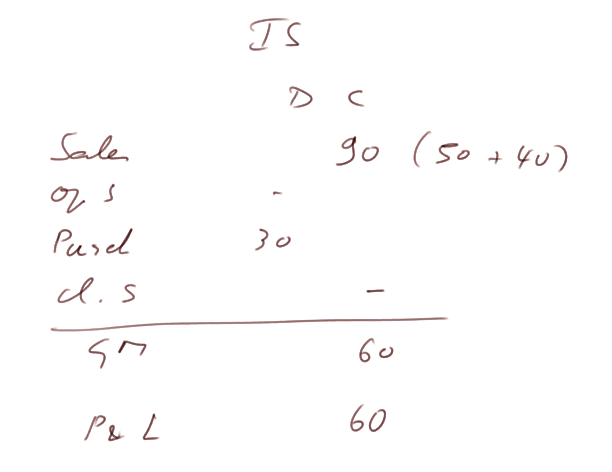
The profit increased from 35 to 60, because this second sale produced 25K€ of profit ( = 250 items x [160 - 60] €/item ).
The BS changes: on the asset side, there is a new asset, the promise from Steve. And on the liability side, profit increased.
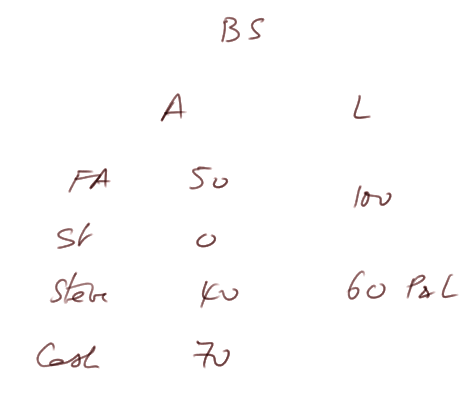
7. Purchase of goods: 200 items at 70€ per item, from Mary, on credit.
No change to the IS.
Evolution of the BS: more stock in the assets, and a creditor appears again.
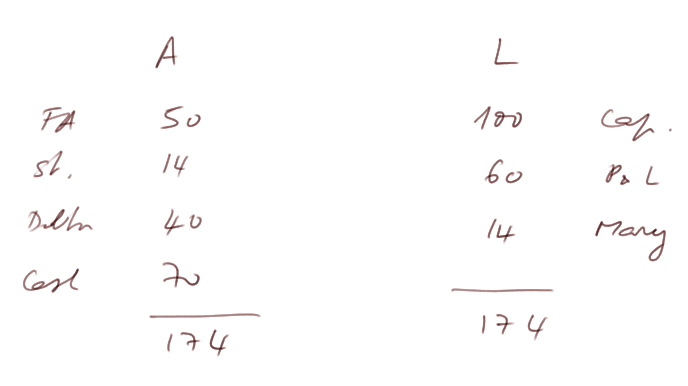
(I listed the figures without specifying in which column. Of course, you know that the assets above are recorded in debit, and the liabilities all in credit, since the P&L is a profit).
8. More purchase of goods at a lower price: 200 items at 65€ each, from Mary, on credit.
No change to the IS.
And the BS becomes:
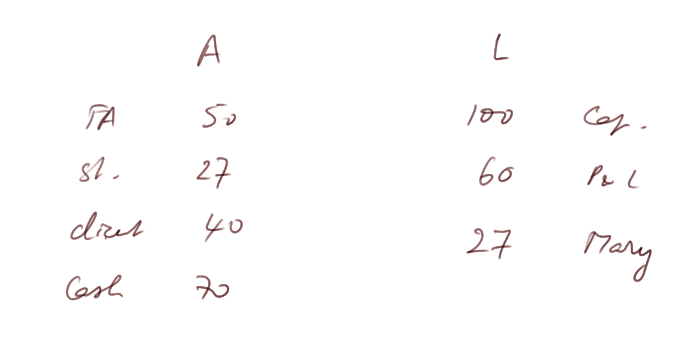
9. Sale of 300 items cash, 180€ each. This transaction brings 54 000€ of cash in the till.
It is an interesting one, for the computation of the IS, because here we have to choose how to valuate the COGS and the remaining stock.
Indeed before this transaction, the stock is

We sell 300 items. So do we deplete the most recent ones ("last-in") first, or the oldest ones ("first-in") first?
Let's choose the LIFO method. In this case, we record that we sold all the items at 65€, and 100 items at 70€.
The COGS of this transaction is 100 x 70 + 200 x 65 = 20 000€ (to be added to the previous COGS of 30 000€). And the remaining stock is 7000€.
So the Income Statement (from the beginning until after transaction 9) is:
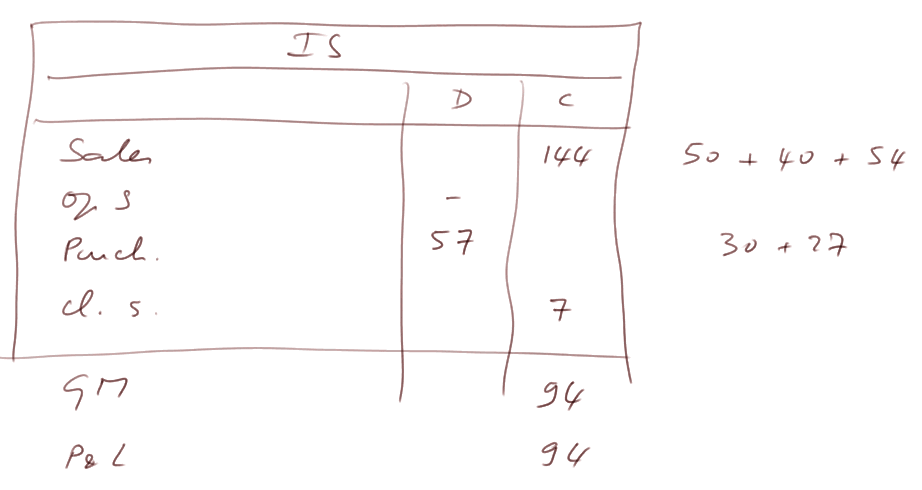
And the BS:

Suppose, before transaction 10 (concerning salary), we decide to record amortization and provision. It is not exactly the way it is done in real life (because this is done normally at the very end of the accounting cycle during adjustments), but for the sake of learning, let's look at it right now.
We pass 10K€ of amortization on the fixed assets, and, considering that Steve is a doubtful client, we provision 50% of the IOU we hold from him.
Then, the IS and BS become this:

10. Finally we pay salary, 10 000€ cash.
Figuring out what's the impact on the Income Statement and the Balance Sheet is left to the reader.



